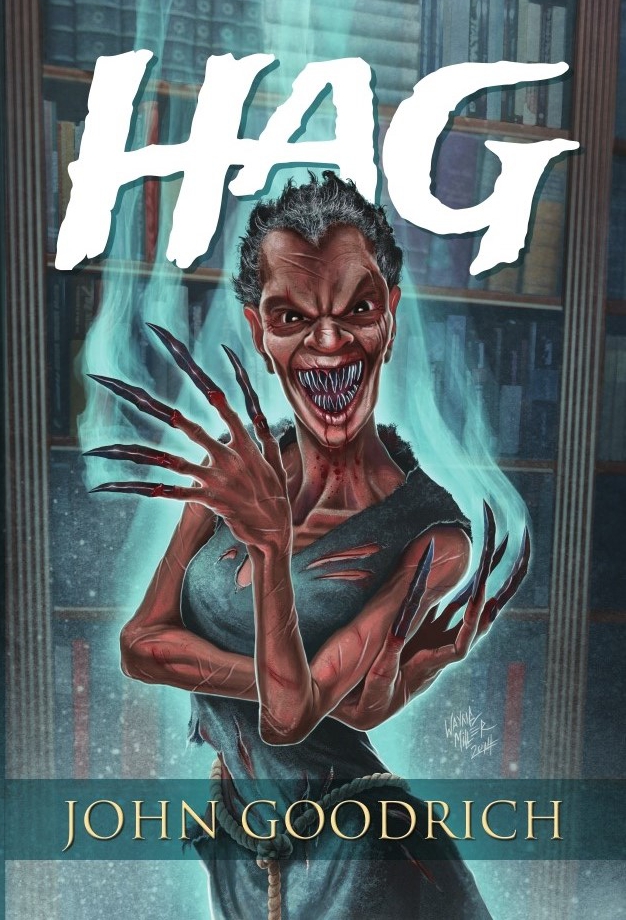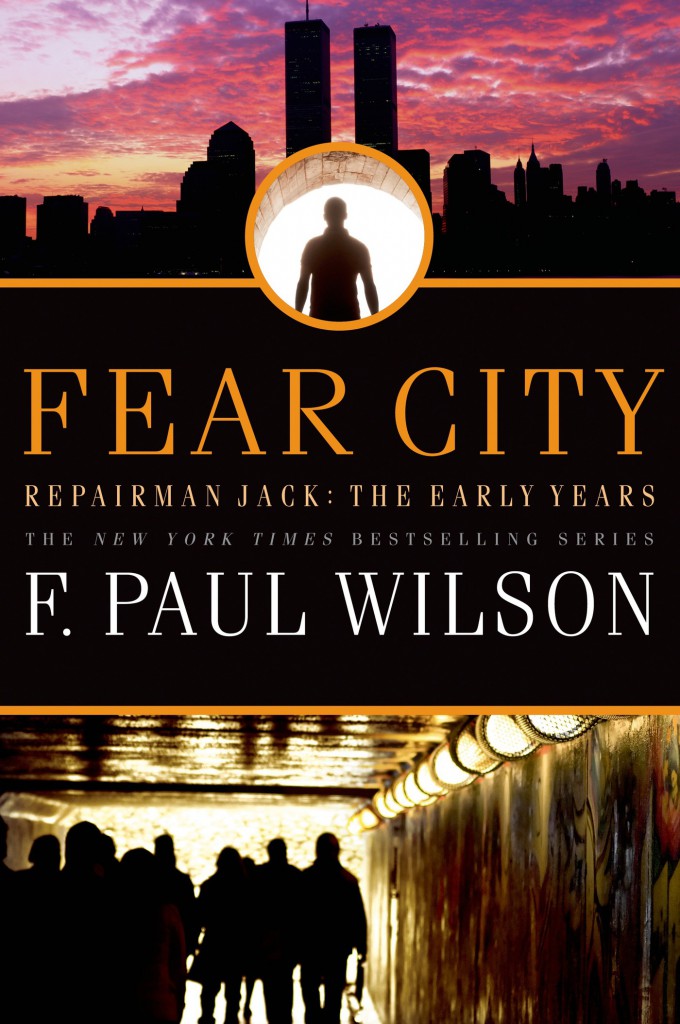Welcome to a special new installment of The Scariest Part, a recurring feature in which authors, comic book writers, filmmakers, and game creators tell us what scares them in their latest works of horror, dark fantasy, dark science fiction, and suspense. (If you’d like to be featured on The Scariest Part, please review the guidelines here.)
This is quite a distinguished week for The Scariest Part, because this time we’re spotlighting not one but two authors! (Click here to see F. Paul Wilson’s Scariest Part from yesterday.) I’m very excited to have John Goodrich as my guest today. He’s been a friend of mine for several years now, and I couldn’t be prouder to feature his long-awaited debut novel, Hag, which includes an introduction by esteemed, multiaward-winning horror author Laird Barron. Hag goes on sale today as part of Thunderstorm Books’ Maelstrom V three-book collector’s series, along with two new books by World Horror Convention Grandmaster Brian Keene. Here is the publisher’s description:
All David wanted was to rest and get better. He moved from Vermont to Boston to beat his cancer. Even before the boxes are unpacked, he and his best friend Sam notice an eerie presence in his new apartment building. The emaciated haunt is a roiling storm of fury with black iron claws and jagged metal teeth. She attacks David without reason or pity, and just when he thinks he knows her limits, she tears through them. Hag is a dark, brooding novel set in a blighted personal landscape. A story of deathless rage and enduring hatred.
And now, let’s hear what the scariest part was for John Goodrich:
I want to tell you a little secret. Although my debut novel is a ghost story, I don’t really like ghost stories.
Before I started Hag, the novel that’s about to be published, I wrote a fantasy novel that I loved to pieces. I couldn’t get agents or publishers interested in it. That hurt. I loved my book. Still do. Someday someone will buy it. But it’s insanity to write a sequel to a book that hasn’t sold, so I decided to write something different, something I wouldn’t love quite so much. After some thought, I decided to write a ghost story.
The ghost story is the prototypical horror story, and humans have been telling them for thousands of years. Thanks to cultural saturation, ghosts are no longer automatically scary. Casper is a friendly ghost. A ghost mascot flogs breakfast cereal. So I knew I would have to add my own spice to make the story effective horror. Given how often the ground has been trod and retrod, I would also have to come up with something unconventional to make it stand out.
Looking for that new something, I read up on the classics: Shirley Jackson’s The Haunting of Hill House, Matheson’s Hell House, Elizabeth Massie’s Homeplace (there’s a reason Hag begins with an H). I fell in love with these stories. They’re complex and brilliant, transcending the cliched sheeted phantom clanking its chains. These ghosts had agendas, personalities, and needs.
I decided to load my ghost with some unfinished business. This would give her depth of character, and provide the protagonists with a mystery to solve, rather then just standing around being terrified. So what kind of unfinished business make a story horror, rather than a mystery?
Some recent stories have altered their emotional hook from an existential fear of death to a naked fear of dying in pain. We read about people who die every day. Murders, accidents, and cancer all claim lives. But every now and then, we hear whispers of someone who did not pass away peacefully, surrounded by their family. The elderly woman who breaks her hip after falling on the kitchen floor, lying in helpless, blinding pain for three days before dying of dehydration. The child manacled to a brick wall, slowly dying of thirst and loneliness. The infected patient, fighting with all their strength, losing a little bit each day, organs failing one by one, painfully dragged toward the inevitable end. The terror of such cruel deaths is both heartbreaking and horrifying. Thus, the perfect thing to make my ghost violent and at the same time, understandable.
How far should I go? How far could I go? It had to be good. The ghost’s story was going to be the emotional center of the novel. If I made the character’s suffering weak, the story loses its driving force and credibility. On the flip side, did I really have the nerve to write the excruciating death of Chibuike, a character I had invented and cared about?
This was the scariest part. Most of my short stories have been Lovecraftian, cosmic horror, rather than anything about pain or physical suffering. I didn’t know if I could write a long, torturous death. I was afraid, and the fear of writing that chapter haunted me until I had to write it. To prepare I read Jack Ketchum’s merciless Off Season and The Girl Next Door. Ketchum is merciless but dispassionate in his description of atrocities. I would have to not tell the reader how to feel about awful things happening to Chibuike, even as I described them. I wrote an entire chapter describing the agonizing demise, imagining the horror consuming her as she clawed at her chains, groped for a light in the darkness, watched all light and hope be slowly, cruelly extinguished. It was an exhausting two weeks.
My work paid off. In his introduction to Hag, Laird Barron writes, “Chibuike’s anguish is most acutely felt for she reflects the very savagery and malice that tore her from hearth and home, peeled away her humanity, and snuffed her life. She cries the loudest and repays hurt with hurt.”
That’s what horror is about. Facing fear and seeing if it kills me.
John Goodrich: Website / Blog / Twitter
Hag: Order it as part of the Maelstrom V three-book collector’s set
John Goodrich lives in the haunted Green Mountains of Vermont, the last refuge of true Lovecraft country. His stories have been included in Steampunk Cthulhu, Dark Rites of Cthulhu, Undead and Unbound, and the Lovecraft E-Zine. Hag is his first published novel. He has spent the last year and a half writing about kaiju films on his blog. His other unhealthy obsessions include biplanes, Icelandic sagas, the Call of Cthulhu role-playing game, and semiotics.



